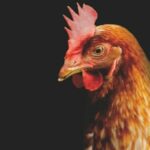
Image: Pixabay
The Gross Domestic Product (GDP) of Brazilian agribusiness, calculated by Cepea (Center for Advanced Studies in Applied Economics), Esalq/USP, in partnership with CNA (Confederation of Agriculture and Livestock of Brazil), had modest growth in the third quarter, of just 0.4%. As a result, the sector's GDP growth from January to September this year is 10.79%.
Considering the performance of agribusiness and the Brazilian economy to date, the sector's share in total GDP could be around 28% in the year. According to Cepea researchers, the increase in GDP in 2021 is linked to the results observed for the agricultural sector (with an increase of 17.06%), as livestock farming continues to record a negative balance from January to September (drop of 4.76%).
Agricultural branch
Cepea researchers indicate that the highlights from January to September were the input and primary segments (agriculture). The GDP of the agricultural inputs segment was driven by the performance of agriculture and the significant increase in prices, especially fertilizers and agricultural machinery. In turn, the excellent result of agriculture in the period is exclusively due to the high real level of agricultural prices, given the significant drops in production for important crops, due to the unfavorable climate. The increase in income in this segment, however, was limited by the strong increase in production costs.
{module Form RD}
Specifically in the third quarter, Cepea researchers highlight that a slowdown in the recovery of industrial production, compared to the previous year, drew attention. This was the scenario for almost all agricultural agribusinesses. Even so, the variation in the segment's GDP in the year to date remained positive. The growth in GDP in agriservices is also worth highlighting. The good performance of agriculture, especially soybeans, and the recovery in the level of vegetable processing (despite the slowdown) increased the use of services by the sector.
Livestock branch
The weak performance of the livestock sector has as its main pressure factor the significant increase in input costs, whether within the farm, in agroindustry or in agroservices. In the primary segment, GDP grew, but with a very modest result, taking into account the strong price increases. This is because the rise in costs was more intense than the rise in product values and there was less production of cattle in the field. In the livestock agroindustry, Cepea researchers indicate that the increases in raw materials could not be passed on to negotiated prices to the same extent, given the weakened domestic demand, causing a narrowing of margins – a situation that worsened in the third quarter. Furthermore, the slaughter of cattle decreased, due to the scarcity of cattle in the countryside. In agriservices, the decline in GDP in the livestock sector also reflected upstream behavior.
Clipping: DATA | Source: Cepea










